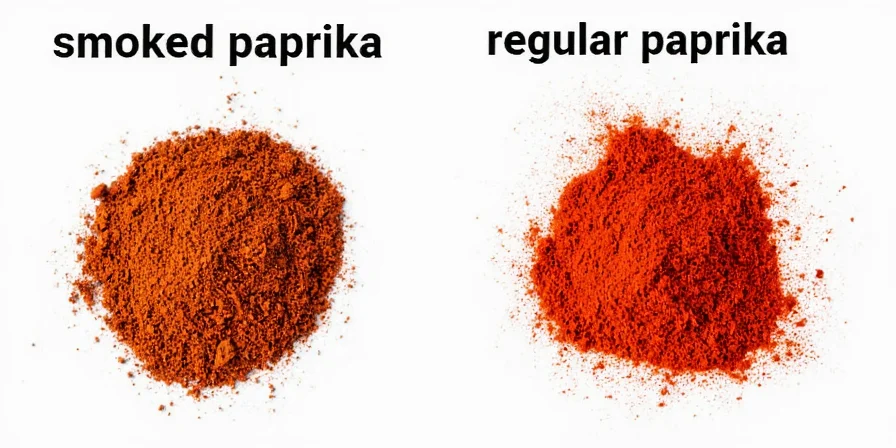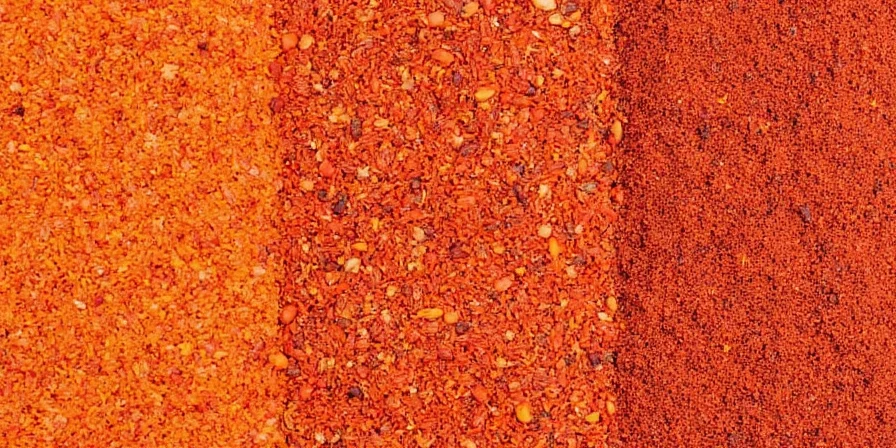Paprika ingredients consist solely of ground dried peppers from the Capsicum annuum family, with variations determined by pepper type and processing method. Authentic paprika contains no additives - sweet versions use bell peppers, hot varieties incorporate chili peppers, and smoked types derive flavor from specific wood-drying techniques. This complete guide reveals exactly what goes into quality paprika and how to identify authentic products.
Table of Contents
- What Exactly Is Paprika?
- The Complete Breakdown: Paprika Ingredients Explained
- Global Variations: How Paprika Ingredients Differ by Region
- 5 Practical Applications: Using Paprika Ingredients Effectively
- Science-Backed Health Benefits of Paprika Ingredients
- How to Select and Store Authentic Paprika Ingredients
- Common Misconceptions About Paprika Ingredients
- Frequently Asked Questions About Paprika Ingredients
- Conclusion: Mastering Paprika Ingredients for Culinary Success

What Exactly Is Paprika?
Paprika is a precision-crafted blend of ground dried peppers from the Capsicum annuum family. Originating in Central and Eastern Europe, its flavor profile transforms dramatically based on regional terroir—Hungary's Kalocsa region yields sweeter notes due to volcanic soil, while Spain's La Vera valley imparts distinct smokiness through oak-wood drying. This geological nuance explains why paprika ingredients vary globally despite shared botanical roots.
Critical insight: The color intensity directly correlates with carotenoid concentration, not heat level. Vibrant red hues signal high capsanthin content, a carotenoid with potent antioxidant properties distinct from lycopene found in tomatoes.

The Complete Breakdown: Paprika Ingredients Explained
Authentic paprika relies on three core components, with processing methods determining final characteristics:
- Bell Peppers: Provide sweetness and color in Noble Sweet Hungarian varieties.
- Chili Peppers: Contribute heat in Édesnömörke (Hungarian hot) and African bird's eye blends.
- Smoking Technique: Spanish pimentón's signature flavor comes from slow-smoking over holm oak for 10-15 days.
| Ingredient | Type of Paprika | Flavor Profile |
|---|---|---|
| Bell Peppers | Sweet | Mild, fruity, slightly vegetal |
| Chili Peppers | Hot | Spicy, peppery, bold |
| Smoked Peppers | Smoked | Earthy, smoky, rich |

Global Variations: How Paprika Ingredients Differ by Region
Geographical indications create dramatic flavor variations:
- Hungarian Paprika: Legally protected designations like Édesnömörke (sweet) and Csípős (hot) require specific pepper varieties grown in designated regions.
- Spanish Pimentón: DOP-certified La Vera pimentón uses exclusively ñora and jaranda peppers smoked in traditional drying houses (secaderos).
- California Paprika: Often blended with Anaheim peppers for balanced heat, reflecting West Coast agricultural practices.
- Global Innovations: Modern craft producers now experiment with single-origin heirloom peppers, creating terroir-specific blends.

5 Practical Applications: Using Paprika Ingredients Effectively
Elevate dishes with these technique-focused applications:
- Maillard Catalyst: Add 1/2 tsp smoked paprika to searing meats—its sugars accelerate browning without burning.
- Color Preservation: Stir sweet paprika into tomato-based sauces at the end of cooking to maintain vibrant hue.
- Flavor Layering: Bloom hot paprika in olive oil before adding liquids to unlock complex aromatics.
- Texture Contrast: Sprinkle smoked paprika over whipped goat cheese for visual and flavor dimension.
- Heat Modulation: Substitute cayenne with hot paprika in spice rubs for more nuanced heat distribution.

Science-Backed Health Benefits of Paprika Ingredients
Scientific analysis reveals evidence-based advantages:
- Carotenoid Powerhouse: Contains capsanthin and beta-carotene at concentrations up to 150mg/100g—significantly higher than fresh peppers due to water removal.
- Antioxidant Synergy: Vitamin E and carotenoids work together to reduce oxidative stress more effectively than isolated compounds.
- Metabolic Support: Capsaicin in hot varieties may temporarily increase metabolic rate by 4-5% according to clinical studies.
- Important Note: Vitamin C content diminishes during drying—paprika provides minimal vitamin C compared to fresh peppers despite concentration claims.
How to Select and Store Authentic Paprika Ingredients
Optimize shelf life and performance:
- Terroir Verification: Look for DOP (Spain) or Hungarian PDO labels guaranteeing origin-specific ingredients.
- Light Protection: Store in opaque containers—UV exposure degrades carotenoids by 30% within 6 months.
- Heat Activation: Warm paprika in oil at 160°F (71°C) for 90 seconds to maximize flavor compound release.
- Moisture Control: Add rice grains to containers in humid climates to prevent caking without anti-caking agents.
- Freshness Test: Rub between fingers—if aroma is weak and color transfers easily, it's oxidized and should be replaced.

Common Misconceptions About Paprika Ingredients
Evidence-based clarifications:
- Myth: Color Indicates Heat: False. Vibrant red hues come from carotenoids, not capsaicin. Sweet Hungarian paprika often appears redder than milder Spanish varieties.
- Myth: Smoked Paprika is Always Hot: Incorrect. Spanish pimentón dulce provides smokiness without heat through specific pepper selection.
- Myth: Paprika is Nutritionally Insignificant: Misleading. Its concentrated carotenoids offer measurable antioxidant benefits per serving.
- Myth: Shelf Life is Indefinite: Dangerous misconception. Oxidized paprika develops rancid compounds that may cause digestive irritation.
Frequently Asked Questions About Paprika Ingredients
What are the primary ingredients used in making paprika?
Paprika is crafted from dried and ground peppers of the Capsicum annuum family. Sweet varieties use bell peppers, hot versions incorporate chili peppers like cayenne, and smoked types use peppers dried over specific hardwoods. Authentic regional varieties prohibit additives.
Does paprika contain lycopene like tomatoes?
No—this is a common misconception. Paprika's red pigment comes from capsanthin and capsorubin carotenoids, not lycopene. These compounds offer different antioxidant profiles with distinct health implications.
How can I verify paprika quality when purchasing?
Check for protected designations (DOP/PDO), vibrant color without orange undertones, and a sweet, peppery aroma—not musty or stale smells. Premium varieties list single-origin peppers rather than generic "red peppers".
Why does my paprika clump in humid climates?
Natural moisture absorption occurs in additive-free paprika. Prevent clumping by storing with silica packets or whole rice grains in airtight containers. Avoid commercial anti-caking agents which dilute flavor.
Can paprika cause allergic reactions?
Rarely, but possible. Capsicum allergies affect approximately 0.5% of the population. Symptoms include oral itching or digestive discomfort. Those with nightshade sensitivities should consult allergists before regular consumption.
Conclusion: Mastering Paprika Ingredients for Culinary Success
Paprika transcends mere colorant through its complex interplay of terroir, processing, and ingredient selection. Understanding these paprika ingredients empowers precise culinary application—from the subtle sweetness of Hungarian noble varieties to the deep smokiness of certified Spanish pimentón. By prioritizing quality verification and proper storage, you unlock consistent flavor and nutritional benefits while avoiding common misconceptions. This knowledge transforms paprika from pantry afterthought to a strategic ingredient for flavor layering and visual appeal.
Invest in single-origin paprika, store it properly, and experiment with heat activation techniques. Your dishes will gain dimension that generic spice blends cannot replicate—proving that true flavor mastery lies in understanding ingredients at the source.

Happy seasoning!











 浙公网安备
33010002000092号
浙公网安备
33010002000092号 浙B2-20120091-4
浙B2-20120091-4